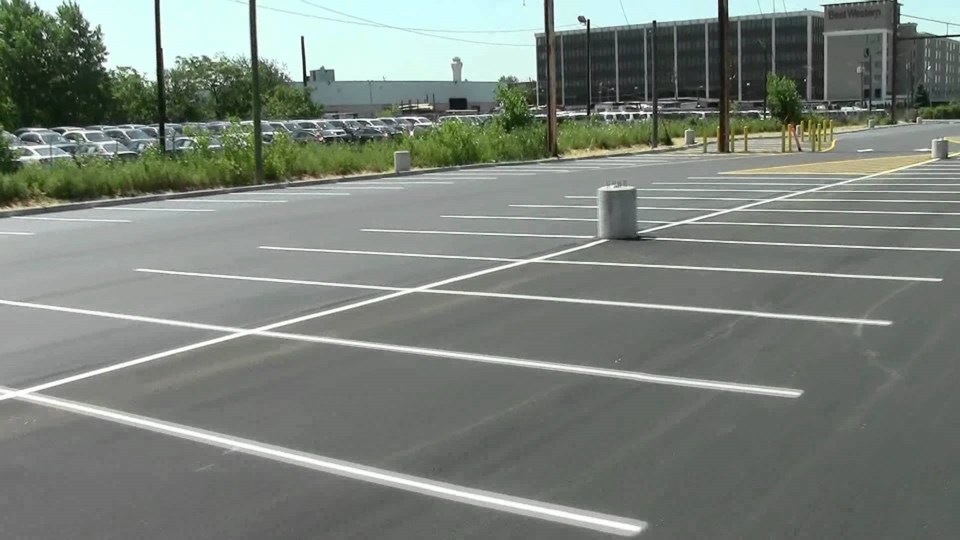With parking stalls costing upwards of $50,000 apiece to build, commercial property developers are increasingly working with retailers to make sure they’re getting the most bang for their buck.
While planners typically mandate a set number of stalls per 1,000 square feet of commercial space (often by type of use), many projects are finding ways to make fewer stalls work harder for developers and tenants alike.
“Retailers always want as much parking as possible, but at some point it becomes a financial question. Underground parking stalls cost a lot of money,” said Daniel Lee, Western Canada principal for tenant representation firm Northwest Atlantic (Canada) Inc. “Building a number of stalls doesn’t always equate to better parking.”
Gone are the dim, dank parkades of yore – the colourless settings for modern gothic fictions. Bright lighting and colourful paint have made the parkades of projects such as PCI Group’s Marine Gateway development feel safer, not to mention easier to navigate. The layout also makes it more functional, ensuring visitors can visit retailers as quickly as if parking were streetside.
“Functionality is key,” Lee said. “You don’t want to have deterrents.”
Yet several challenges face parkade designers. Site considerations affect floor plans, and developers must anticipate the tenant mix to ensure the number of parking spots is sufficient to meet municipal guidelines as well as retailers’ actual needs.
Often, a mixed-use project includes complementary uses that let developers negotiate a lower parking allotment than might otherwise be possible. Transit-oriented projects also need fewer spots, given that many visitors don’t arrive by vehicle.
Both factors played into arrangements at Marine Gateway, where PCI Group made do with about a quarter of the eight spots per 1,000 square feet that Cineplex Cinemas typically demands.
“We’re effectively two parking stalls per 1,000 square feet of commercial area, but when you add in the sharing it really becomes about three per 1,000,” explained Tim Grant, vice-president with PCI. “We’re able to take office stalls that are dedicated during the day to office [tenants], and those are then able to be used in the cinemas’ peak times in the evening.”
Still, balancing the needs of various tenants can crimp efforts to reduce the amount of space given over to parking.
With Langley-based Overwaitea Food Group’s under-construction store in Whitehorse, Yukon, the need to respect the lease terms of other tenants in the development means the company can’t build fewer than five spots per 1,000 square feet of space.
“Other anchor tenants are concerned that if you’re not providing enough stalls then maybe your customers or staff will start using their portion of the parking lot,” said Mike Fong, Overwaitea’s vice-president of real estate and store development.
But less is often more in rural areas, where vehicles can be as large as the landscape.
It’s an issue even at some suburban locations in Metro Vancouver, such as Terra Nova Village, where wider stalls not only are more functional, but also can help make visitors feel more comfortable doing business at the mall.
“In Richmond, if you can give them better, wider stalls, people don’t have to worry about their nice cars getting dinged,” Fong said, noting that Overwaitea’s ideal stall width is nine feet. “If we could, we’d restripe that lot and have fewer and better stalls. … We have customers that won’t shop with us at Terra Nova, for example, because the stalls are 8.5 feet wide.”
Civic planning requirements mean lot reconfiguration isn’t in the cards, so Overwaitea is working with the circumstances – which at least give consumers access to free surface parking, rather than having parking tickets validated in order to secure complimentary space.
“You want the best you can deliver for the site,” Fong said. “It’s all about convenience, and ease and speed for consumers – keeping it simple."
@BIVnews
news@biv.com
For more business news, go to biv.com



